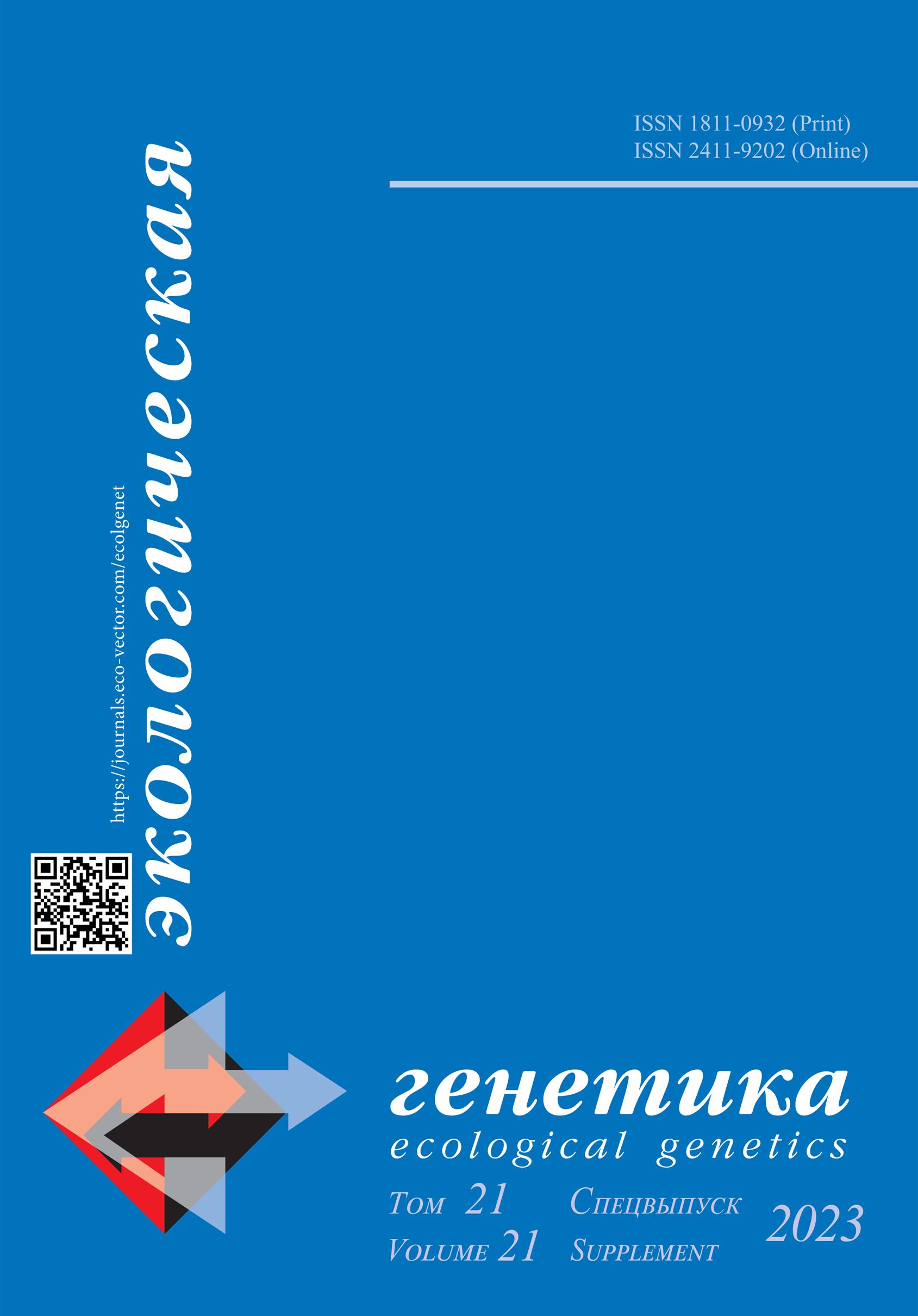Study of functional features of plant root systems using CRISPR/Cas-mediated genome editing
- Авторы: Kiryushkin A.S.1, Ilina E.L.1, Demchenko K.N.1
-
Учреждения:
- Komarov Botanical Institute, Russian Academy of Sciences
- Выпуск: Том 21 (2023): Спецвыпуск
- Страницы: 28-29
- Раздел: «ГМО: ИСТОРИЯ, ДОСТИЖЕНИЯ, СОЦИАЛЬНЫЕ И ЭКОЛОГИЧЕСКИЕ РИСКИ»
- Статья получена: 15.08.2023
- Статья одобрена: 30.08.2023
- Статья опубликована: 04.12.2023
- URL: https://journals.eco-vector.com/ecolgenet/article/view/568351
- DOI: https://doi.org/10.17816/ecogen568351
- ID: 568351
Цитировать
Полный текст
Аннотация
CRISPR/Cas-mediated genome editing is a powerful tool of plant functional genomics. Hairy root transformation is a rapid and convenient approach for obtaining transgenic roots. When combined, these techniques represent a fast and effective means of studying gene function [1, 2].
A common construct for efficient genome editing and selection of hairy roots is comprised of three components, i.e., a cassette carrying the gene encoding the Cas nuclease, a cassette expressing the guide RNA (gRNA), and a cassette encoding a screenable or selectable marker [2]. After design and construction, the resulting vector is used to transform plant using appropriate Rhizobium rhizogenes strain.
Over 26 plant species have been used in experiments combining genome editing and hairy root transformation to date [2]. Possible applications of CRISPR/Cas9 genome editing using hairy root transformation include different directions like test the efficiency of the CRISPR/Cas9 genome editing; obtaining whole genome-edited plants regenerated from individual edited hairy roots; investigation of root development or root function, root nodule symbiosis, resistance to biotic or abiotic stresses, or metabolic engineering [2].
The basic principles of plant CRISPR/Cas genome editing like the different components of CRISPR/Cas vectors, the types of Cas nuclease, design principles of gRNAs, as well as the possible applications of CRISPR/Cas genome editing in hairy roots will discuss. The application of this method for multigene editing strategy will also be demonstrated on DEEPER ROOTING1 genes of cucumber.
The study was supported by the Ministry of Science and Higher Education of the Russian Federation (Grant No. 075-15-2021-1056).
Ключевые слова
Полный текст
CRISPR/Cas-mediated genome editing is a powerful tool of plant functional genomics. Hairy root transformation is a rapid and convenient approach for obtaining transgenic roots. When combined, these techniques represent a fast and effective means of studying gene function [1, 2].
A common construct for efficient genome editing and selection of hairy roots is comprised of three components, i.e., a cassette carrying the gene encoding the Cas nuclease, a cassette expressing the guide RNA (gRNA), and a cassette encoding a screenable or selectable marker [2]. After design and construction, the resulting vector is used to transform plant using appropriate Rhizobium rhizogenes strain.
Over 26 plant species have been used in experiments combining genome editing and hairy root transformation to date [2]. Possible applications of CRISPR/Cas9 genome editing using hairy root transformation include different directions like test the efficiency of the CRISPR/Cas9 genome editing; obtaining whole genome-edited plants regenerated from individual edited hairy roots; investigation of root development or root function, root nodule symbiosis, resistance to biotic or abiotic stresses, or metabolic engineering [2].
The basic principles of plant CRISPR/Cas genome editing like the different components of CRISPR/Cas vectors, the types of Cas nuclease, design principles of gRNAs, as well as the possible applications of CRISPR/Cas genome editing in hairy roots will discuss. The application of this method for multigene editing strategy will also be demonstrated on DEEPER ROOTING1 genes of cucumber.
The study was supported by the Ministry of Science and Higher Education of the Russian Federation (Grant No. 075-15-2021-1056).
Об авторах
Alexey Kiryushkin
Komarov Botanical Institute, Russian Academy of Sciences
Email: akiryushkin@binran.ru
ORCID iD: 0000-0002-9916-4819
research associate, laboratory of cellular and molecular mechanisms of plant development
Россия, Saint PetersburgElena Ilina
Komarov Botanical Institute, Russian Academy of Sciences
Email: eilina@binran.ru
ORCID iD: 0000-0003-2799-2014
phd, research associate, laboratory of cellular and molecular mechanisms of plant development
Россия, Saint PetersburgKirill Demchenko
Komarov Botanical Institute, Russian Academy of Sciences
Автор, ответственный за переписку.
Email: demchenko@binran.ru
ORCID iD: 0000-0001-9422-3106
phd, chief researcher, laboratory of cellular and molecula mechanisms of plant development
Россия, Saint PetersburgСписок литературы
- Gogolev YV, Ahmar S, Akpinar BA, et al. OMICs, epigenetics, and genome editing techniques for food and nutritional security. Plants. 2021;10(7);1423. doi: 10.3390/plants10071423
- Kiryushkin AS, Ilina EL, Guseva ED, et al. Hairy CRISPR: Genome editing in plants using hairy root transformation. Plants. 2022;11(1);1–39. doi: 10.3390/plants11010051
Дополнительные файлы










